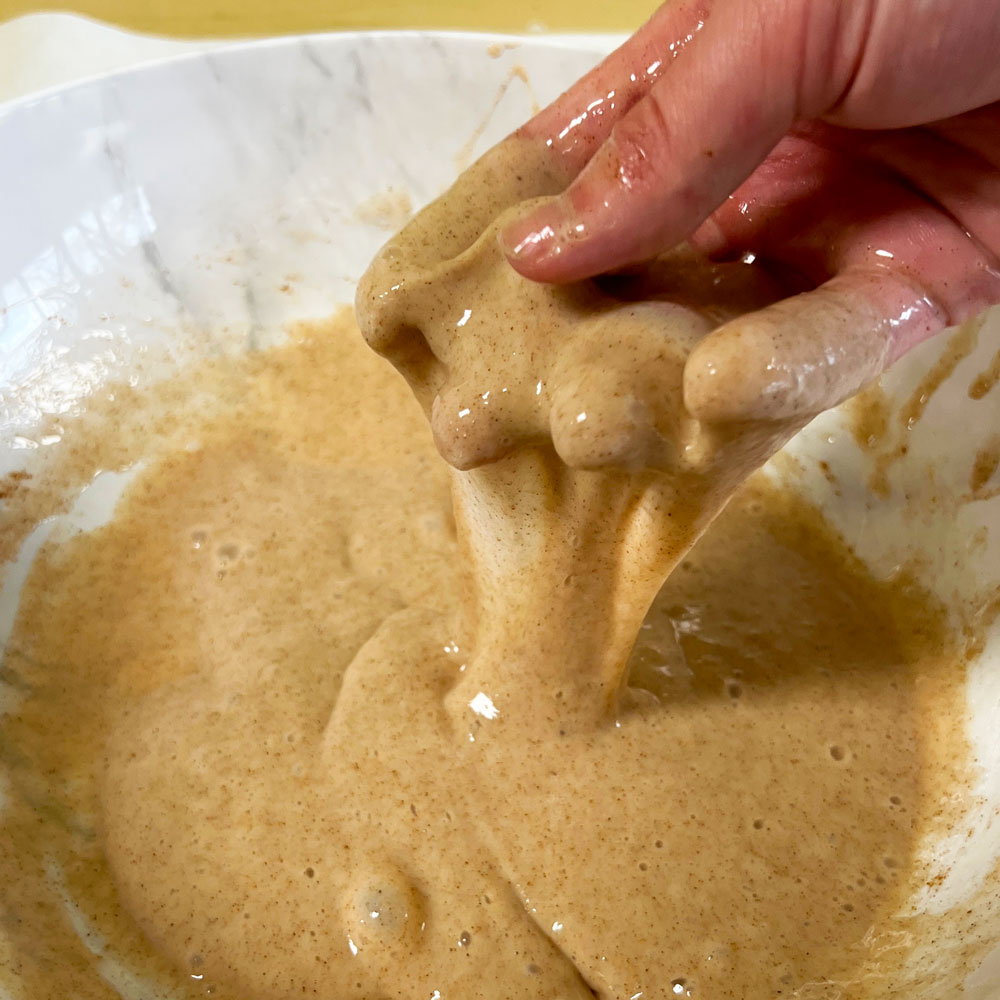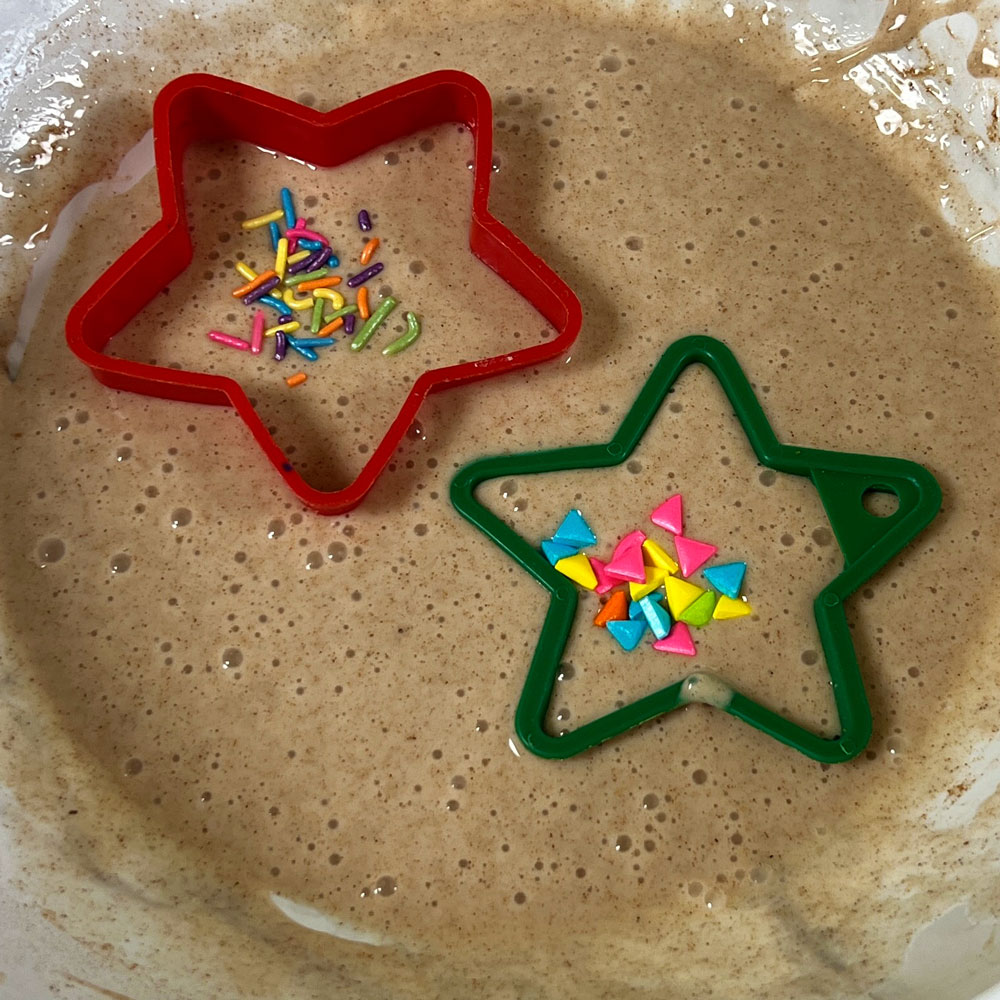In this science activity inspired by Little Bins for Little Hands, you can make the house smell like you're baking gingerbread cookies without even turning on the oven! Throw in some seasonal sensory items at the end and you've created a fun, festive batch of sensory slime!
"You can make different slime recipes using different spices. Have your child guess what spice or memory this reminds them of. This is also another great opportunity to talk about measurement and math when creating the recipe together!"
—Elyse Handel, Early Childhood Educator at The Children’s Museum
Materials:

- ½ cup white glue
- ¼ cup liquid starch
- ½ cup water
- 1 ½ tablespoons ground cinnamon
- ¼ teaspoon pumpkin pie spice
- ¼ teaspoon ground nutmeg
- ¼ teaspoon ground ginger
- Large bowl
- Cookie sheet
- Rubber spatula
- Plastic cookie cutters and other age-appropriate sensory items—large buttons, marbles, beads, etc.
- Large storage container with a lid
Process:
- Mix water and glue in a large bowl.
- Add spices to water and glue mixture. Does it smell like gingerbread cookies yet?
- Mix in liquid starch. Continue to stir until the liquid is gone and you have an ooey, gooey blob of slime.
- Use your hands to knead the slime. As you move the slime around in your hands, you’ll notice the consistency will start to change.

- Add sensory items to the slime.
- Place gingerbread scented sensory slime on cookie sheet.
- Enjoy playing with your gingerbread scented slime that's full of sensory goodness. Note: adult supervision required. It might smell yummy, but children will NOT want to eat this slime!
- Store your slime by sealing it in a large airtight container.

What’s going on?
All slimes are made up of a chemical structure called a polymer. What’s a polymer? Well, the word’s Greek roots give us a clue. “Poly” means “many. “Mer” means “part.” So a polymer is a molecule—a chemical combination of multiple different atoms made of many smaller parts all linked together. Polymers are typically stretchy. At the very least, they can be molded easily when they’re heated, and then set into a stable shape when they cool down. Rubber, plastic, elastic, and PVC are all common examples of polymers. Heck, even your DNA is technically a type of polymer.
On its own, glue is not a polymer. It does have the potential to be one, though. Glue’s a solution of monomers. “Mono” means “single,” so “monomer” means “single part.” If you can find a way to combine those single parts, then you can turn them into a polymer. That’s what the liquid starch does. It’s what we call a crosslinker. A crosslinker has the power to combine those monomers into polymers. This is a form of chemical change—you start with one set of molecules (our glue monomers) and end with a different set (our slime polymer). What we finish with is chemically different from what we started with.

 (
(











